Types of Spectroscopy
- Atomic Absorption Spectroscopy (AAS): This technique is used to determine the concentration of various elements in a sample by measuring the amount of light absorbed by the atoms in the gas phase.
- Ultraviolet-Visible (UV-Vis) Spectroscopy: UV-Vis spectroscopy involves the absorption of ultraviolet and visible light by a substance, providing information about the electronic structure of molecules.
- Infrared (IR) Spectroscopy: IR spectroscopy measures the absorption of infrared radiation by a substance, providing information about the functional groups present in molecules.
- Nuclear Magnetic Resonance (NMR) Spectroscopy: NMR spectroscopy is used to study the magnetic properties of atomic nuclei, providing information about the structure and dynamics of molecules.
- Raman Spectroscopy: Raman spectroscopy measures the scattering of light by a substance, providing information about molecular vibrations and crystal structures.
- Mass Spectrometry: Mass spectrometry is a technique used to determine the molecular weight and chemical structure of a substance by ionizing and separating its components based on their mass-to-charge ratio.
Key Principles
- Energy Levels: Spectroscopy relies on the interaction between matter and electromagnetic radiation, which causes transitions between different energy levels in atoms, molecules, or ions.
- Absorption and Emission: When electromagnetic radiation interacts with matter, it can be absorbed or emitted, leading to the observation of characteristic spectra that reveal information about the substance being studied.
- Quantum Mechanics: The interpretation of spectroscopic data often involves the principles of quantum mechanics, which describe the behavior of particles and energy at the atomic and subatomic levels.
- Instrumentation: Spectroscopic techniques rely on specialized instruments and detectors to measure the interaction of matter with electromagnetic radiation, such as spectrometers and detectors.
Applications
Spectroscopy has diverse applications in scientific research and industry, including:- Identifying unknown compounds and analyzing the composition of materials.
- Studying the structure and function of biomolecules, such as proteins and nucleic acids.
- Monitoring environmental pollutants and assessing air and water quality.
- Characterizing the properties of astronomical objects and studying the composition of stars and planets.
- Developing new pharmaceuticals and materials with tailored properties.
◂Biology Worksheets and Study Guides High School. Invertebrates
Worksheet/Answer key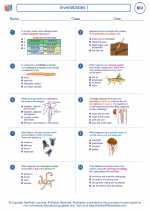 Invertebrates I
Invertebrates I  Worksheet/Answer key
Worksheet/Answer key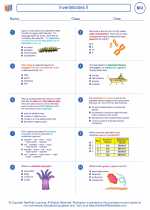 Invertebrates II
Invertebrates II  Worksheet/Answer key
Worksheet/Answer key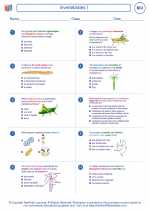 Invertebrates I
Invertebrates I  Worksheet/Answer key
Worksheet/Answer key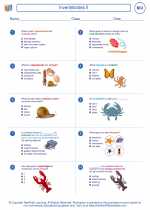 Invertebrates II
Invertebrates II  Worksheet/Answer key
Worksheet/Answer key Invertebrates I
Invertebrates I  Worksheet/Answer key
Worksheet/Answer key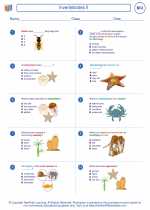 Invertebrates II
Invertebrates II  Vocabulary/Answer key
Vocabulary/Answer key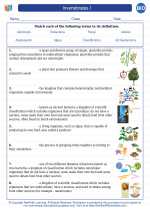 Invertebrates I
Invertebrates I  Vocabulary/Answer key
Vocabulary/Answer key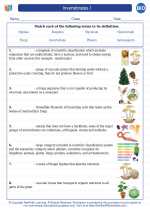 Invertebrates I
Invertebrates I  Vocabulary/Answer key
Vocabulary/Answer key Invertebrates I
Invertebrates I 

 Worksheet/Answer key
Worksheet/Answer key
 Worksheet/Answer key
Worksheet/Answer key
 Worksheet/Answer key
Worksheet/Answer key
 Worksheet/Answer key
Worksheet/Answer key
 Worksheet/Answer key
Worksheet/Answer key
 Vocabulary/Answer key
Vocabulary/Answer key
 Vocabulary/Answer key
Vocabulary/Answer key
 Vocabulary/Answer key
Vocabulary/Answer key

The resources above cover the following skills:
Concepts of Life Science (SC1, SC2, SC3)
The student demonstrates an understanding of the structure, function, behavior, development, life cycles, and diversity of living organisms by describing the structure-function relationship